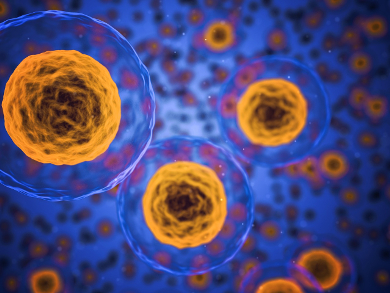The inefficient delivery of nanoparticles in drug delivery and imaging approaches has long been a problem. This is due to a lack of techniques which can monitor the complex interactions in these systems and has led to a poor understanding of how nanoparticles interact with cellular environments.
Andrew M. Smith, University of Illinois at Urbana-Champaign, USA, and colleagues have used quasi-spherical core-shell CdZnS nanocrystals to create a live-cell single-quantum-dot imaging and tracking technique that can analyze and classify nanoparticle states in an intracellular environment. The technique combines trajectory diffusion parameters with brightness measurements.
The method has enabled distinct and heterogeneous populations to be revealed in these environments, where it would not otherwise be possible when measuring any of the parameters individually. The researchers were able to investigate the particle loading, cluster distribution, and vesicular release in a single cell, as well as to measure the osmotic delivery of nanoparticles.
- Single quantum dot tracking reveals the impact of nanoparticle surface on intracellular state,
Mohammad U. Zahid, Liang Ma, Sung Jun Lim, Andrew M. Smith,
Nat. Commun. 2018.
https://doi.org/10.1038/s41467-018-04185-w




